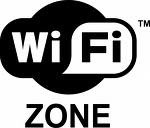
WLAN (Wireless Local Area Network) means technology which allows to build wireless data networks with satisfactory parameters and quite large ranges of operation at a low cost.
Potentiality of WLANs
- wireless access to local network in home, office etc.
- wireless access to the Net in public space: airports, stations, cafes etc. (hot-spot)
- wireless point-to-point links (connecting LAN networks, telemetry, remote control, remote monitoring)
- wireless access to the Internet (both in cities and in the country)
- emergency communications link (duplication of wired network)
WLAN standards
- 802.11a - in 5 GHz band, transfer rate up to 54 Mbps
- 802.11b - in 2.4 GHz band, transfer rate up to 11 Mbps
- 802.11g - in 2.4 GHz band, transfer rate up to 54 Mbps
However, there are also used other standards:
- 802.11f - IAPP - Inter Access Point Protocol - for cooperation between access points
- 802.11i - standard defining new security methods in wireless networks
- 802.11n - standard for transmitting multimedia in homes using MIMO technology, up to 300 Mbps
- 802.11e - standard defining QoS - support for high quality of services
- 802.16 - WiMax standard for backbone networks of high capacity
Wireless network range
It should be realized that the range of a wireless network depends on many factors; we can have an influence on some of them and the rest is unknown. The range of wireless network depends on:
1. Factors related to used devices:
- output power (it has been decided by the manufacturer)
- cable attenuation (depends on the cable and its length)
- gain of antennas (given by the manufacturer)
- sensitivity of devices (given by the manufacturer)
2. External factors:
- attenuation between antennas (can be estimated basing on FSL model)
- interferences from other devices (can't be predicted - some additional margin of safety needs to be provided to compensate these interferences)
- influence of physical barriers (walls, trees)
Propagation of radio waves
Fresnel zone - Fresnel zone is one of the most important conceptions connected with propagation of electromagnetic waves, which is indispensable to assess parameters of wireless link. It is the area actively participating in transmission of radio signal energy. Shape of this area is an ellipse in longitudinal section, and circle in cross-section. Radius of this circle is a function of the ratio of distances between antennas - it has the maximum value in the middle of the link. The importance of first Fresnel zone comes from the fact that almost all energy of the signal is conveyed via this space.
No comments:
Post a Comment